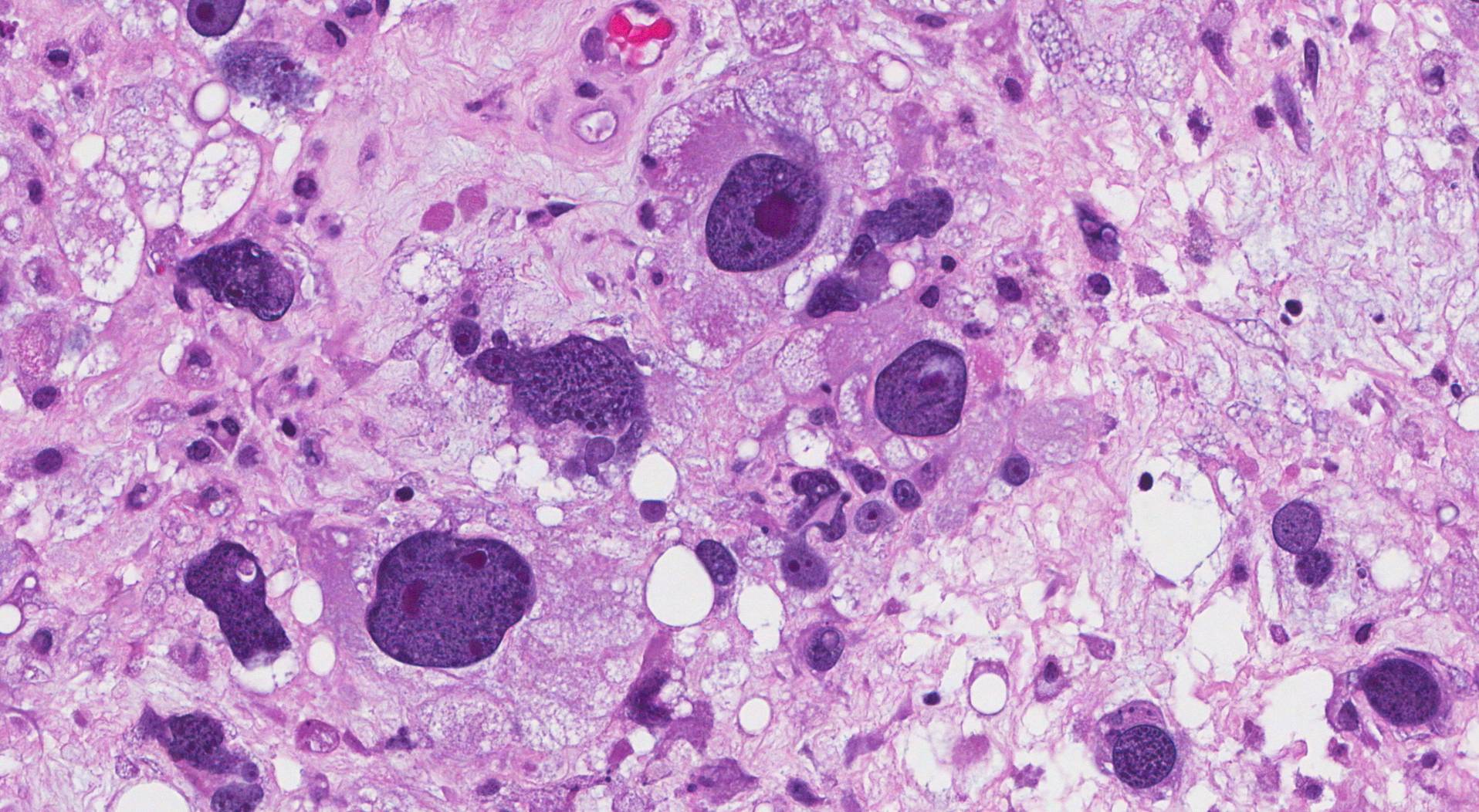In pathology, the term pleomorphic is used to describe cells that appear very different from each other when viewed under a microscope. Pleomorphic cells vary significantly in size, shape, and colour. Although pathologists may describe the whole cell as pleomorphic, they usually focus on the appearance of the cell’s nucleus (the part containing genetic material or DNA). For example, some cells may have large and irregular nuclei, while others have smaller, round nuclei. This wide variation is called pleomorphism.
Does pleomorphic mean cancer?
The term pleomorphic itself does not necessarily mean cancer. It is a descriptive word pathologists use to highlight the unusual appearance and variability of cells. However, pleomorphic cells are more commonly associated with malignant (cancerous) tumours. Cancer cells often look abnormal, showing significant differences in size and shape, resulting in pleomorphism. Pathologists consider the presence of pleomorphic cells as one of many clues to determine if a tumour is benign (noncancerous) or malignant (cancerous).
Can pleomorphic cells be seen in noncancerous tumors?
Although pleomorphic cells are often linked to cancer, they can also be found in certain benign (noncancerous) conditions. For example, a benign tumour called a pleomorphic lipoma (a harmless tumour of fatty tissue) can contain pleomorphic cells. Additionally, pleomorphic cells can be seen in normal tissues reacting to injury or inflammation. Therefore, the presence of pleomorphic cells alone does not confirm cancer, and pathologists look for other features before making a diagnosis.
What types of tumours commonly have pleomorphic cells?
Pleomorphic cells can appear in many different tumour types, both benign and malignant.
Some examples include:
Malignant tumours (cancers):
- Undifferentiated pleomorphic sarcoma, an aggressive cancer of soft tissues such as muscle or connective tissue.
- High-grade breast cancer, where pleomorphic cells are common and indicate a more aggressive tumour.
- Lung cancer, particularly high-grade tumours.
- Melanoma (a type of skin cancer), often showing pronounced pleomorphism.
Benign tumours:
- Pleomorphic lipoma, a benign fatty tumour commonly found just beneath the skin that can contain pleomorphic cells despite being noncancerous.
Due to the variety of tumours that contain pleomorphic cells, pathologists usually perform additional tests to clarify the diagnosis and guide appropriate treatment.
Do pleomorphic cells mean the cancer is more aggressive?
In general, the presence of pleomorphic cells in a cancer suggests that the tumour may behave more aggressively. Tumours with highly pleomorphic cells often grow quickly, spread faster, and can be more difficult to treat effectively. However, pleomorphism is only one of many characteristics pathologists evaluate when determining how aggressive a tumour might be. Other important factors include tumour size, location, how quickly the cells are dividing (mitotic rate), and the presence of necrosis (cell death).
Identifying pleomorphic cells is, therefore, important because it helps doctors understand a tumour’s potential behaviour. This information guides treatment decisions, ensuring each patient receives the most effective and appropriate care.




